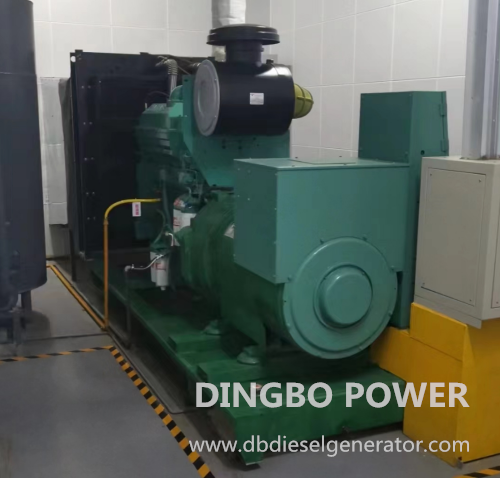Diesel generators sets are a smart choice for backup power needs during power outages due to their reliability, durability and efficiency. They can also be used in remote sites where the power grid might be unreliable. However, standby diesel gensets could create safety hazards if not installed correctly. Here are some diesel generator room requirements and design considerations to keep in mind when installing and operating your generator.
Where should a diesel generator be placed?
Generator exhaust contains carbon monoxide gas, which can cause unconsciousness or death. Therefore, the installation location of generators is essential. The National Fire Protection Association (NFPA) has a standard for the installation and use of stationary combustion engines. Per NFPA 37, an enclosed generator set should be located outdoors, at least 5 feet from openings in walls and at least 5 feet from structures having combustible walls. Generators positioned outside the building shall be located in a suitable enclosure to keep it safe in wet conditions. Diesel generators can also be installed within a building.

According to NFPA 110, Emergency Power Supply Systems (EPSS) include power sources like diesel generators (Emergency Power Supply - EPS), ATSs and associated accessories needed to supply electrical power to the selected circuits. The EPS and the EPSS should be protected from floods, fire, vandalism, wind, earthquakes, lightning, and other environmental hazards. Thus, diesel generator sets should be placed outdoors in a protective enclosure, where sufficient air for cooling and ventilation is available in an unobstructed manner. Additionally, they should be placed on a level surface and rest on a raised concrete pad to prevent contact from rising water levels. Avoid locating the generators in basements subject to flooding. If you have to position the genset in a room, ensure that it complies with all genset room design requirements.
Diesel generator room requirements
When installing a genset indoors, you need to separate the generator room from occupied areas or choose a silent type diesel generator to protect the surrounding areas from noise pollution produced by the unit during operation. The generator room should be clean, dry, well-lit and well-ventilated. Generally, generator rooms shall have a minimum two hour fire rating including rated walls and doors. They must have enough space for a person to be able to service the generator with enclosure doors open and for two people to pass one another. Providing access and clearance around the engine and generator for routine maintenance is required.
The National Electric Code (NEC) requires 3 to 4 feet (1m to 1.3m) of aisle space between live electrical components of 600 volts or less and a minimum of three feet and up to as much as 12 feet of aisle space for installations over 600 volts. You may find the guidelines of generator room size requirements vary greatly, as specific voltages and setups will require different space allowances.
For adequate maintenance and airflow clearance, the area above the generator should be at least 4 feet with a minimum of 3 feet at the front and the ends of the enclosure. The generator should not be placed under a deck or other structure that is closed in and would limit air flow. It's recommended that floor space between an engine and parallel wall space or another genset should not be less than the width of the engine.
Proper ventilation of the generator room is crucial and you need to allow enough breathing room for intake and discharge ventilation. The ventilation needs can vary by manufacturer and accessories. For better generator room ventilation, in addition to having ample space for obtaining proper room temperature, air for engine combustion airflow requirements shall be installed per the manufacturer requirements. The outside airflow must be designed for the rated load of the EPS. Make sure there is adequate airflow to remove equipment heat and maintain equipment within their ambient temperature ratings under all weather and electrical load conditions. Read more about: Requirements for Ventilation and Cooling of Diesel Genset.
Contact Dingbo Power Today
Dingbo Power specializes in providing power solutions to homes and businesses all around the world. We offer design, supply, commissioning and maintenance services of generators for almost 20 years. If you’re looking for a new unit for your facility, contact us today and speak to a member of our knowledgeable sales team.
Comments
Post a Comment